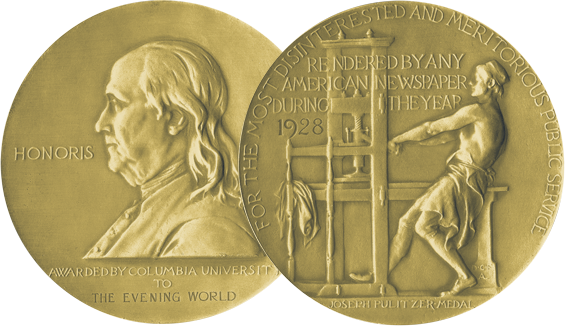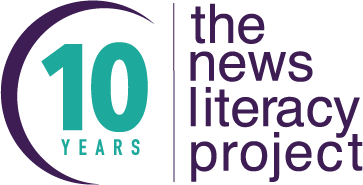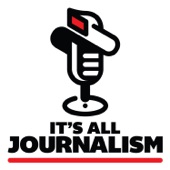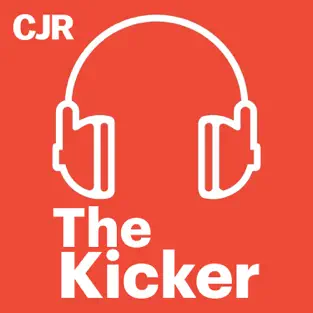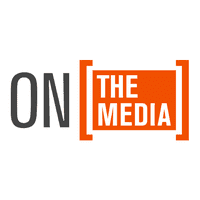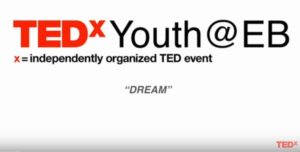 | Smart Brevity: The Power of Saying More with Less – Jim VandeHei, Mike Allen, and Roy Schwartz Brevity is confidence. Length is fear. This is the guiding principle of Smart Brevity, a communication formula built by Axios journalists to prioritize essential news and information, explain its impact and deliver it in a concise and visual format. Now, the co-founders of Axios have created an essential guide for communicating effectively and efficiently using Smart Brevity—think Strunk and White’s Elements of Style for the digital age. In SMART BREVITY: The Power of Saying More with Less, Axios co-founders Jim VandeHei, Mike Allen, and Roy Schwartz teach readers how to say more with less in virtually any format. They also share communications lessons learned from their decades of experience in media, business and communications. |
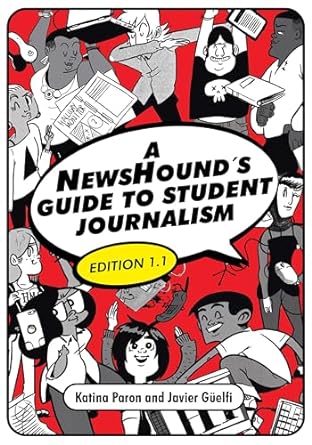 | A Newshound’s Guide to Journalism, Edition 1.1 – Katina Paron
Covering the basics of media arts values and practice, this revised edition of the acclaimed graphic textbook offers cub reporters a primer on the drama, adventure and ethical conundrums that make journalism rewarding and fun. Using ripped-from-the-headlines examples, the authors challenge students to engage with the big issues. The stories revolve around a diverse newspaper staff at an urban high school who find themselves in a series of teachable moments. Packed with reporting exercises and fundamentals of the craft, woven into engaging narratives, each comic also gives readers a look at the real-life event that inspired the tale. |
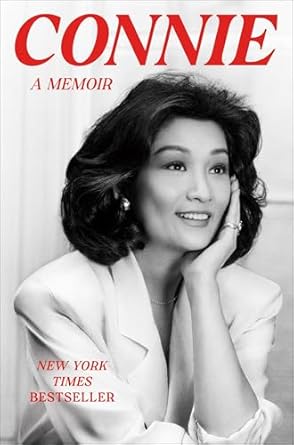 | Connie: A Memoir – Connie Chung Connie Chung is a pioneer. The youngest of ten children, she was the only one born in the U.S., after her parents escaped war-torn China in a harrowing journey to America, where Connie would one day make history as the first woman (and Asian) to co-anchor the CBS Evening News. Profoundly influenced by her family’s cultural traditions, yet growing up completely Americanized, she dealt with overt sexism and racism. Despite this, her tenacity led her to become a household name. In Connie: A Memoir, Chung reveals behind-the-scenes details of her singular life. From her close relationship with Maury Povich, her husband and professional confidant; to the horrific memory of being molested by the doctor who had delivered her; to her joy of adopting their son when she was almost fifty, she does not hold back. She talks honestly about the good, bad, and ugly in her personal and professional life—this is Connie Chung like you’ve never seen her before. |
 | Trailblazer: A Pioneering Journalist’s Fight to Make the Media Look More Like America – Dorothy Butler Gilliam Most civil rights victories are achieved behind the scenes, and this riveting, beautifully written memoir by a “black first” looks back with searing insight on the decades of struggle, friendship, courage, humor and savvy that secured what seems commonplace today-people of color working in mainstream media. Told with a pioneering newspaper writer’s charm and skill, Gilliam’s full, fascinating life weaves her personal and professional experiences and media history into an engrossing tapestry. When we read about the death of her father and other formative events of her life, we glimpse the crippling impact of the segregated South before the civil rights movement when slavery’s legacy still felt astonishingly close. We root for her as a wife, mother, and ambitious professional as she seizes once-in-a-lifetime opportunities never meant for a “dark-skinned woman” and builds a distinguished career. We gain a comprehensive view of how the media, especially newspapers, affected the movement for equal rights in this country. And in this humble, moving memoir, we see how an innovative and respected journalist and working mother helped provide opportunities for others. With the distinct voice of one who has worked for and witnessed immense progress and overcome heart-wrenching setbacks, this book covers a wide swath of media history — from the era of game-changing Negro newspapers like the Chicago Defender to the civil rights movement, feminism, and our current imperfect diversity. This timely memoir, which reflects the tradition of boot-strapping African American storytelling from the South, is a smart, contemporary consideration of the media. |
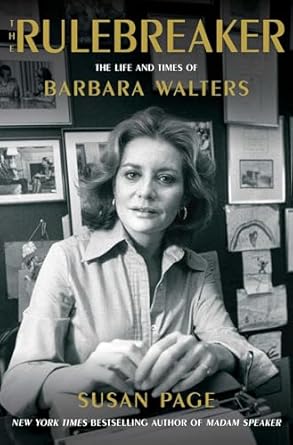 | The Rulebreaker: The Life and Times of Barbara Walters – Susan Page In The Rulebreaker, Susan Page conducts 150 interviews and extensive archival research to discover that Walters was driven to keep herself and her family afloat after her mercurial and famous impresario father attempted suicide. But she never lost the fear of an impending catastrophe, which is what led her to ask for things no woman had ever asked for before, to ignore the rules of misogynistic culture, to outcompete her most ferocious competitors, and to protect her complicated marriages and love life from scrutiny. Page breaks news on every front—from the daring things Walters did to become the woman who reinvented the TV interview to the secrets she kept until her heath. This is the “stunning” (Norah O’Donnell), “brilliantly written” (Andrea Mitchell) account of the woman who knew she had to break all the rules so she could break all the rules about what viewers deserved to know. |
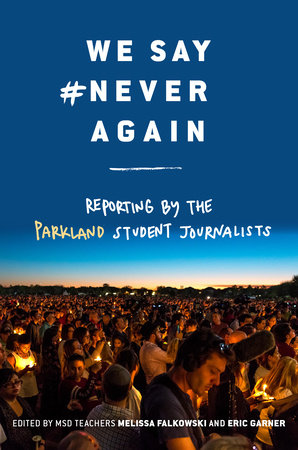 | We Say #NeverAgain: Reporting by the Parkland Student Journalists – Edited by Melissa Falkowski and Eric Garner A journalistic look at the shooting at Marjory Stoneman Douglas High School in Parkland and the fight for gun control–as told by the student reporters for the school’s newspaper and TV station. This timely and media-driven approach to the Parkland shooting, as reported by teens in the journalism and broadcasting programs and in the Marjory Stoneman Douglas newspaper, is an inside look at that tragic day and the events that followed that only they could tell. It showcases how the teens have become media savvy and the skills they have learned and honed–harnessing social media, speaking to the press, and writing effective op-eds. Students will also share specific insight into what it has been like being approached by the press and how that has informed the way they interview their own subjects. |
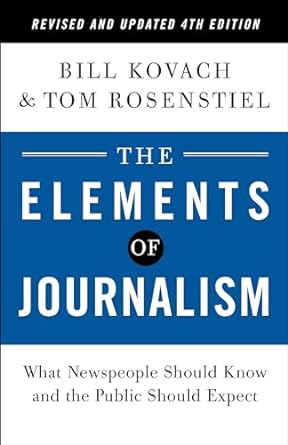 | The Elements of Journalism – Bill Kovach and Tom Rosenstiel More than two decades ago, the Committee of Concerned Journalists gathered some of America’s most influential newspeople and asked them, “What is journalism for?” Through exhaustive research, surveys, interviews, and public forums, the committee identified the essential elements that define journalism and its role in our society. The result is one of the most important books on media ever written—winner of the Goldsmith Book Prize from Harvard, a Society of Professional Journalists Award, and the Bart Richards Award for Media Criticism from Penn State University. Updated with new material covering the ways journalists can leverage technology to their advantage, especially given the shifting revenue architecture of news—and with the future of news, facts, and democracy never more in question—this fourth edition of The Elements of Journalism is the authoritative guide for journalists, students, and anyone hoping to stay informed in contentious times. |
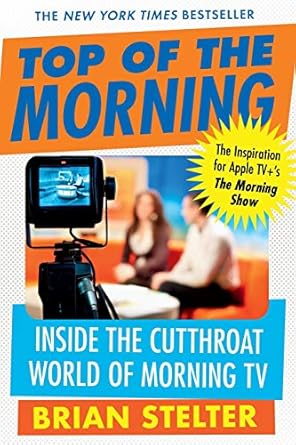 | Top of the Morning: Inside the Cutthroat World of Morning TV – Brian Stelter When America wakes up with personable and charming hosts like Robin Roberts and George Stephanopoulos, it’s hard to imagine their show bookers having to guard a guest’s hotel room all night to prevent rival shows from poaching. But that is just a glimpse of the intense reality revealed in this gripping look into the most competitive time slot in television. Featuring exclusive content about all the major players of the 2000s, Top of the Morning illuminates what it takes to win the AM — when every single viewer counts, tons of jobs are on the line, and hundreds of millions of dollars are at stake. Stelter is behind the scenes as Ann Curry replaces Meredith Vieira on the Today show, only to be fired a year later in a fiasco that made national headlines. He’s backstage as Good Morning America launches an attack to dethrone Today and end the longest consecutive winning streak in morning television history. And he’s there as Roberts is diagnosed with a crippling disease — on what should be the happiest day of her career. So grab a cup of coffee, sit back, and discover the dark side of the sun. |
 | She Said: Breaking the Sexual Harassment Story That Helped Ignite a Movement– Jodi Kantor & Megan Twohey For many years, reporters had tried to get to the truth about Harvey Weinstein’s treatment of women. Rumors of wrongdoing had long circulated. But in 2017, when Jodi Kantor and Megan Twohey began their investigation into the prominent Hollywood producer for the New York Times, his name was still synonymous with power. During months of confidential interviews with top actresses, former Weinstein employees, and other sources, many disturbing and long-buried allegations were unearthed, and a web of onerous secret payouts and nondisclosure agreements was revealed. These shadowy settlements had long been used to hide sexual harassment and abuse, but with a breakthrough reporting technique Kantor and Twohey helped to expose it. But Weinstein had evaded scrutiny in the past, and he was not going down without a fight; he employed a team of high-profile lawyers, private investigators, and other allies to thwart the investigation. When Kantor and Twohey were finally able to convince some sources to go on the record, a dramatic final showdown between Weinstein and the New York Times was set in motion. Nothing could have prepared Kantor and Twohey for what followed the publication of their initial Weinstein story on October 5, 2017. Within days, a veritable Pandora’s box of sexual harassment and abuse was opened. Women all over the world came forward with their own traumatic stories. Over the next twelve months, hundreds of men from every walk of life and industry were outed following allegations of wrongdoing. But did too much change—or not enough? Those questions hung in the air months later as Brett Kavanaugh was nominated to the Supreme Court, and Christine Blasey Ford came forward to testify that he had assaulted her decades earlier. Kantor and Twohey, who had unique access to Ford and her team, bring to light the odyssey that led her to come forward, the overwhelming forces that came to bear on her, and what happened after she shared her allegation with the world. In the tradition of great investigative journalism, She Said tells a thrilling story about the power of truth, with shocking new information from hidden sources. Kantor and Twohey describe not only the consequences of their reporting for the #MeToo movement, but the inspiring and affecting journeys of the women who spoke up—for the sake of other women, for future generations, and for themselves.
Read less |
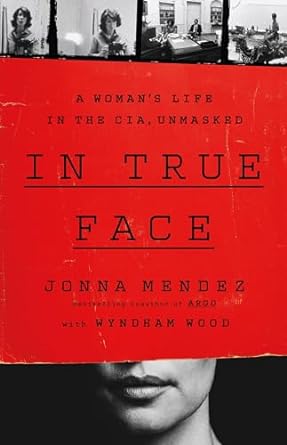 | In True Face – Jonna Mendez Jonna Hiestand Mendez began her CIA career as a “contract wife” performing secretarial duties for the CIA as a convenience to her husband, a young officer stationed in Europe. She needed his permission to open a bank account or shut off the gas to their apartment. Yet Mendez had a talent for espionage, too, and she soon took on bigger and more significant roles at the Agency. She parlayed her interest in photography into an operational role overseas, an unlikely area for a woman in the CIA. Often underestimated, occasionally undermined, she lived under cover and served tours of duty all over the globe, rising first to become an international spy and ultimately to Chief of Disguise at CIA’s Office of Technical Service. In True Face recounts not only the drama of Mendez’s high-stakes work—how this savvy operator parlayed her “everywoman” appeal into incredible subterfuge—but also the grit and good fortune it took for her to navigate a misogynistic world. This is the story of an incredible spy career and what it took to achieve it. |
 | Chasing History: A Kid in the Newsroom – Carl Bernstein In 1960, Bernstein was just a sixteen-year-old at considerable risk of failing to graduate high school. Inquisitive, self-taught―and, yes, truant―Bernstein landed a job as a copyboy at the Evening Star, the afternoon paper in Washington. By nineteen, he was a reporter there. In Chasing History: A Kid in the Newsroom, Bernstein recalls the origins of his storied journalistic career as he chronicles the Kennedy era, the swelling civil rights movement, and a slew of grisly crimes. He spins a buoyant, frenetic account of educating himself in what Bob Woodward describes as “the genius of perpetual engagement.” Funny and exhilarating, poignant and frank, Chasing History is an extraordinary memoir of life on the cusp of adulthood for a determined young man with a dogged commitment to the truth. |
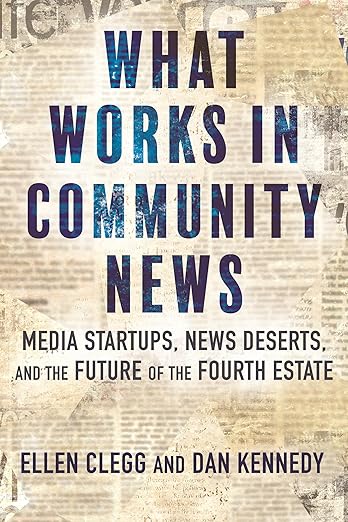 | What Works in Community News – Ellen Clegg and Dan Kennedy Local news is essential to democracy. Meaningful participation in civic life is impossible without it. However, local news is in crisis. According to one widely cited study, some 2,500 newspapers have closed over the last generation. And it is often marginalized communities of color who have been left without the day-to-day journalism they need to govern themselves in a democracy. Veteran journalists Ellen Clegg and Dan Kennedy cut through the pessimism surrounding this issue, showing readers that new, innovative journalism models are popping up across the country to fill news deserts and empower communities. What Works in Community News examines more than a dozen of these projects, including: - Sahan Journal, a digital publication dedicated to reporting on Minnesota’s immigrant and refugee communities;
- MLK50: Justice Through Journalism, a nonprofit news outlet in Memphis, TN, focused on poverty, power, and public policy;
- New Haven Independent / WNHH / La Voz Hispana de Connecticut, a digital news project that expanded its reach in the New Haven community through radio and a Spanish-language partnership;
- Storm Lake Times Pilot, a print newspaper in rural Iowa innovating with a hybrid for-profit/nonprofit model; and
- Texas Tribune, once a pioneering upstart, now one of the most well-known—and successful—digital newsrooms in the country.
Through a blend of on-the-ground reporting and interviews, Clegg and Kennedy show how these operations found seed money and support, and how they hired staff, forged their missions, and navigated challenges from the pandemic to police intimidation to stand as the last bastion of collective truth—and keep local news in local hands. |


